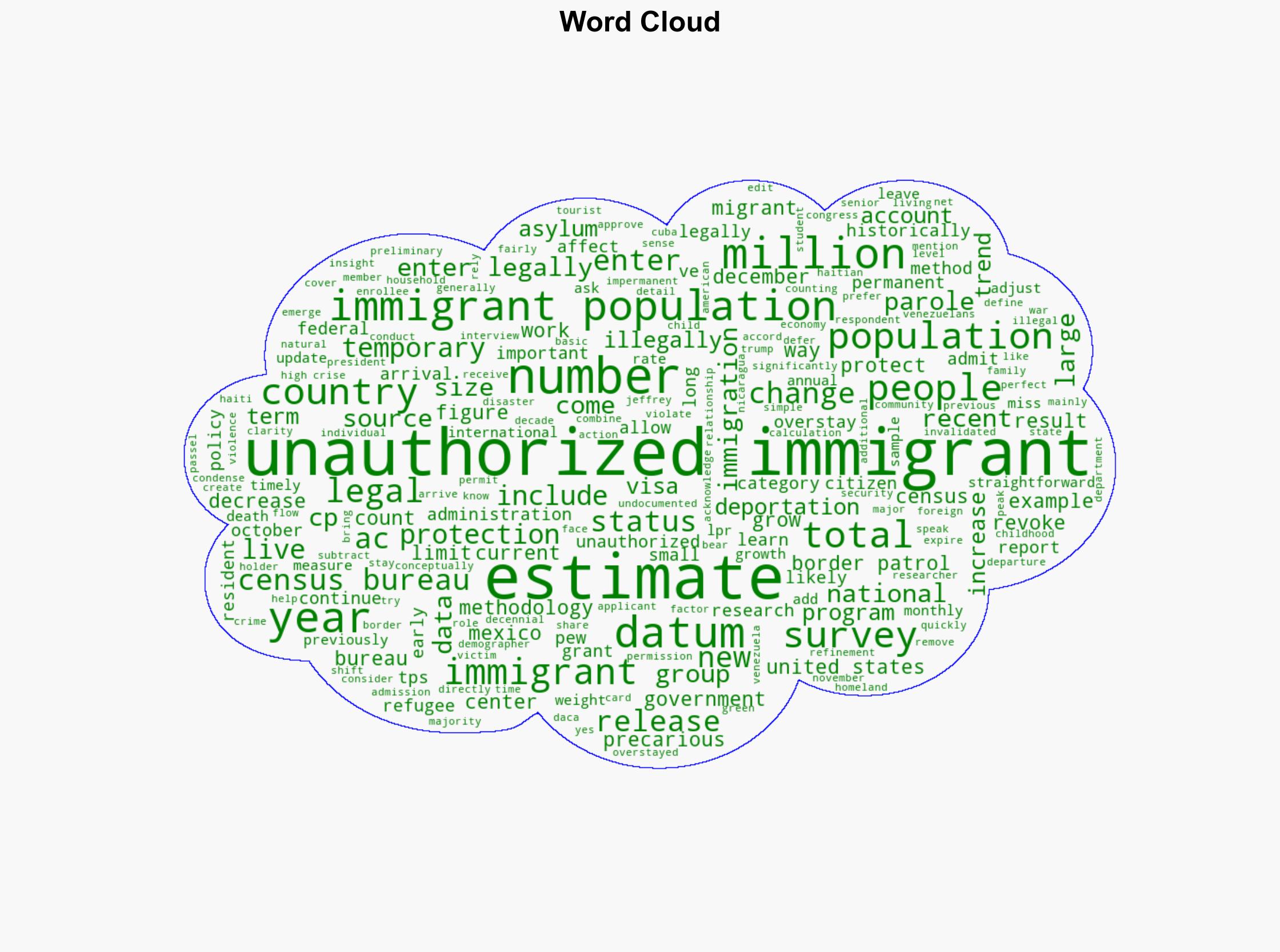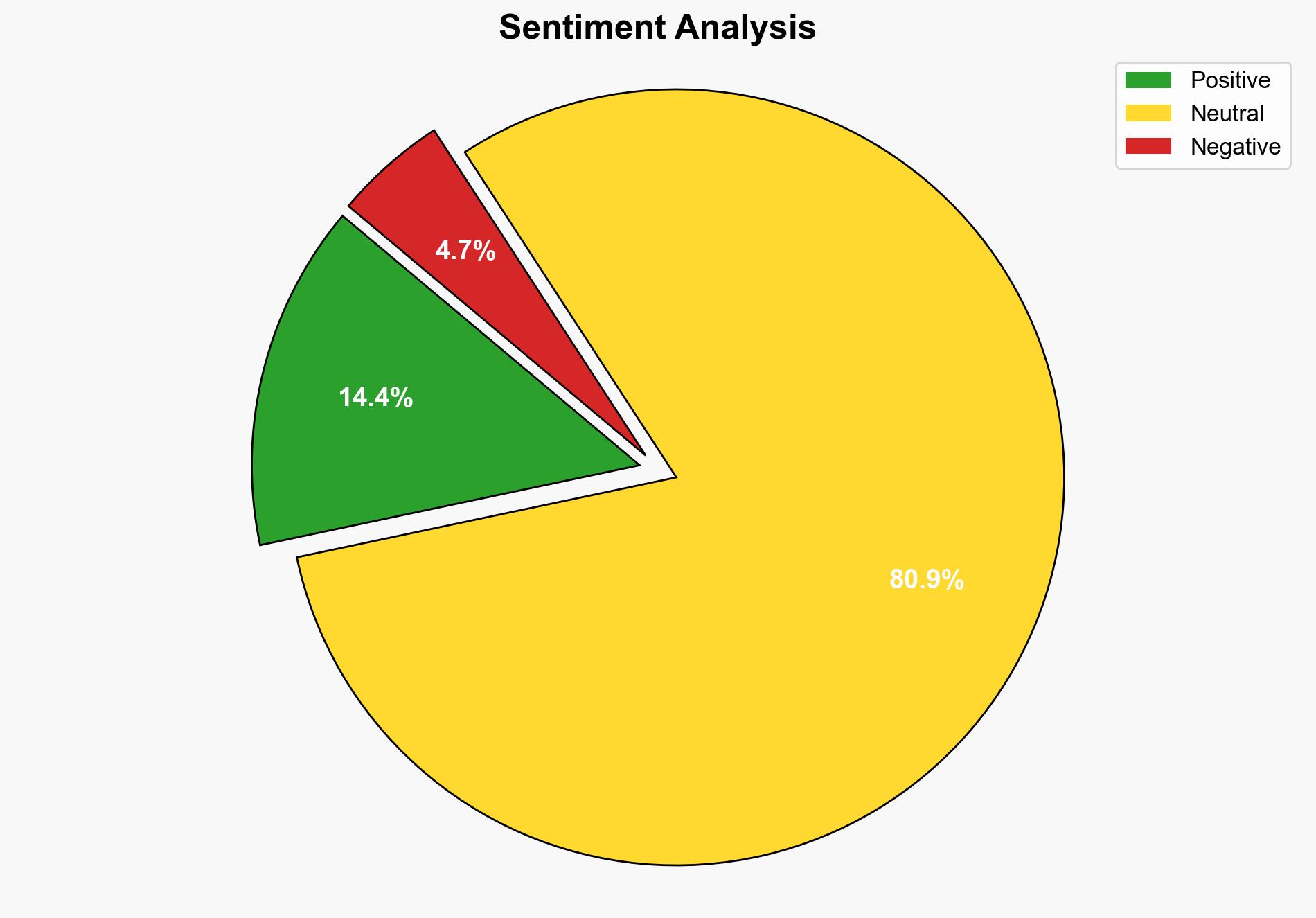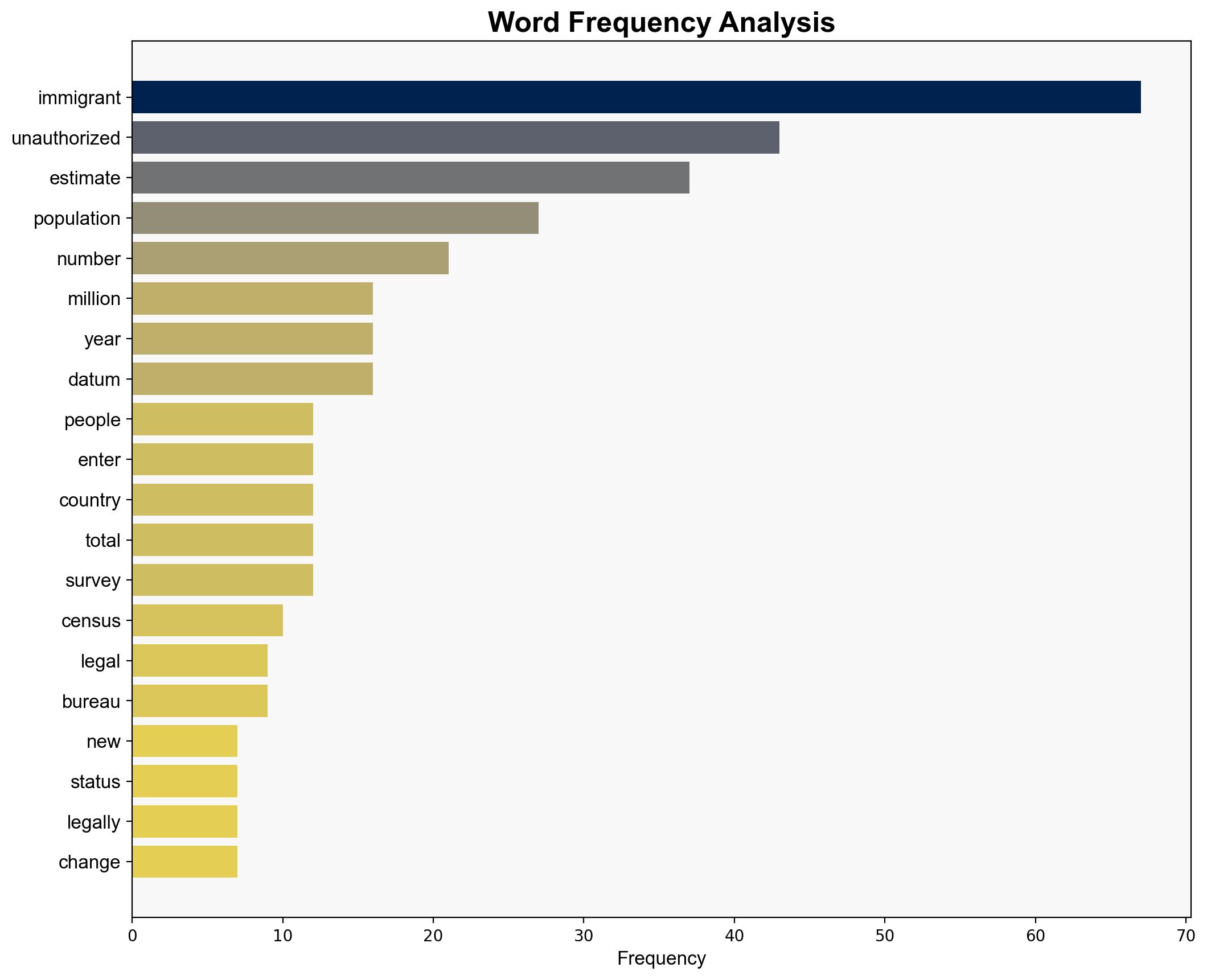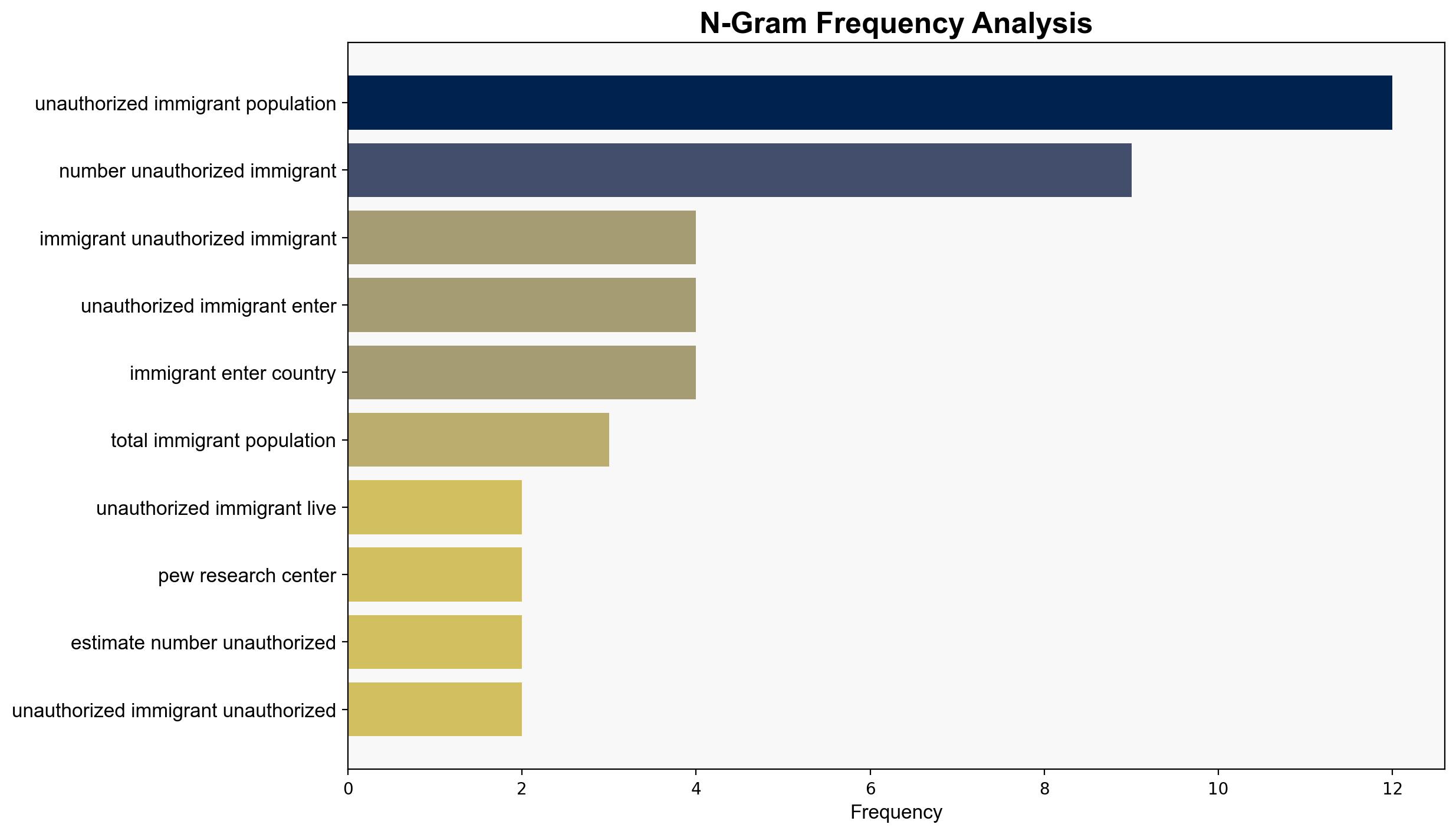QA How Pew Research Center estimates the number of unauthorized immigrants living in the US – Pew Research Center
Published on: 2025-08-22
Intelligence Report: QA How Pew Research Center estimates the number of unauthorized immigrants living in the US – Pew Research Center
1. BLUF (Bottom Line Up Front)
The analysis of the Pew Research Center’s estimation methods for unauthorized immigrants in the US suggests a high likelihood of continued growth in this population. The most supported hypothesis is that the increase is primarily driven by policy shifts and economic factors. Confidence level: Moderate. Recommended action: Enhance data collection and policy analysis to better understand and manage the dynamics of unauthorized immigration.
2. Competing Hypotheses
1. **Hypothesis A**: The increase in unauthorized immigrants is primarily due to policy changes that have reduced deportations and increased temporary protections.
2. **Hypothesis B**: Economic factors, such as labor demand in the US, are the primary drivers of the increase in unauthorized immigrants.
Using the Analysis of Competing Hypotheses (ACH) 2.0, Hypothesis A is better supported by the data, particularly the mention of policy shifts like the revocation of temporary protections under the Trump administration and the creation of new programs for temporary protection.
3. Key Assumptions and Red Flags
– **Assumptions**: Both hypotheses assume accurate data collection and reporting by Pew Research Center. Hypothesis A assumes that policy changes have a direct and immediate impact on immigration patterns.
– **Red Flags**: Potential underreporting or misclassification of immigrant status due to fear of deportation or lack of documentation. The data may not fully account for recent policy changes or economic shifts.
4. Implications and Strategic Risks
The increase in unauthorized immigrants could strain public services and impact labor markets. It may also influence political discourse and policy-making, potentially leading to stricter immigration laws. Economic reliance on unauthorized labor poses a risk if policy changes lead to sudden deportations or changes in labor availability.
5. Recommendations and Outlook
- Enhance collaboration between government agencies and research institutions to improve data accuracy and policy impact assessments.
- Scenario-based projections:
- **Best Case**: Improved data leads to informed policy-making, balancing economic needs with immigration control.
- **Worst Case**: Sudden policy shifts lead to economic disruptions and increased social tensions.
- **Most Likely**: Gradual policy adjustments with moderate impact on immigration patterns and labor markets.
6. Key Individuals and Entities
Jeffrey Passel, senior demographer at Pew Research Center.
7. Thematic Tags
immigration policy, economic impact, demographic analysis, policy analysis




